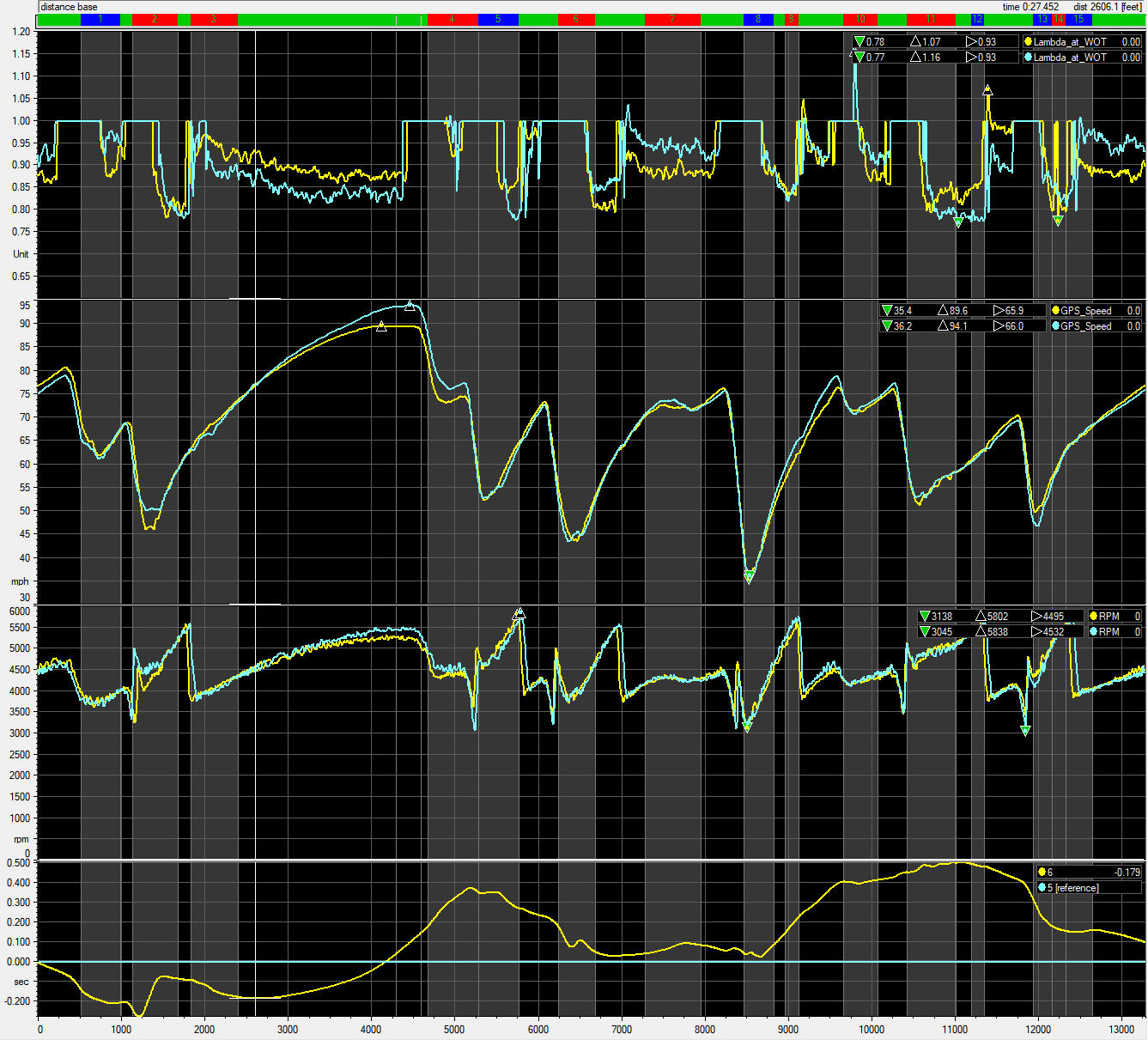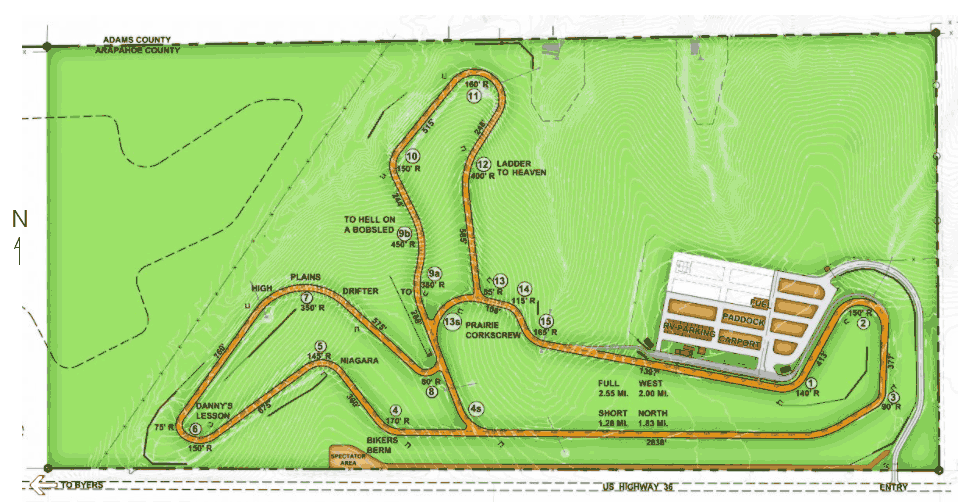I noticed an unexpected variation in my AFR on my Vee while racing this past weekend, and after pondering it for a while, I was wondering if anybody can come up with a compelling explanation.
First, some background. I have a 1970 Zink C4 (at least as we call them here in Colorado) that I run in vintage races with RMVR. This past winter, I decided to be very non-vintage and add an AiM MXm datalogger with a bunch of sensors. Most relevant to the following problem, one of the sensors is a throttle position sensor, and another sensor is a lambda sensor, with the Bosch wideband O2 sensor mounted in a bung on the cylinder 3 exhaust pipe.
While reviewing the data from the races we had at High Plains Raceway in Colorado this past weekend, I noticed something odd: during every session on Saturday, the lambda value reported by the O2 sensor appeared to vary according to where I was on the track. In comparison, the lambda value on other days varied only as it normally does, which is to say that it runs a little lean at low RPMS and gets progressively richer at higher RPMs (indicating that I might need a bigger main jet and/or a bigger air-correction jet, but let's set that aside for now).
Here's a view of two laps, one from Sunday (yellow) showing representative normal behavior, and one from Saturday (blue) showing representative unexpected behavior. The top section shows lambda versus track distance at WOT (with a value of 1.0 for non-WOT periods). The section section down shows speed; the third engine RPM, and the fourth time delta. Also note that the turns are labeled across the top (1-15), with blue being lefts and red being rights:
To reiterate, the way the blue trace moves relative to the yellow trace is the weird part. Notice how the engine is running lean into turn 1 (i.e., blue trace higher than yellow), then rich on the straight between turns 3 and 4, then lean on the straight/sweeper between turns 6 and 8, then pretty close to normal for a few turns, then lean on the short straight between 10 and 11, then really rich between 11 and 13, then lean again on the straight coming out of 15 and into 1.
For reference, here's a map of High Plains Raceway, oriented with north to the top and with the turns numbered:
My best guess so far is that it's somehow related to the wind. Temperature, pressure, and humidity were all very similar between the two days. On Sunday (yellow trace), the wind was out of the north at 10 mph during the session shown in the datalogger data. On Saturday (blue trace), the wind was out of the southeast at 10 mph during the respective session. That would have provided a tailwind in the rich sectors and a headwind in the lean sectors on Saturday.
Anybody ever seen anything like this? Any ideas about why this would happen? If it is in fact related to the wind, how would that produce the observed effect? I find it hard to believe that there would be enough of a ram-air effect on my Zink to cause this.
Thanks!
Jeff







 Reply With Quote
Reply With Quote
